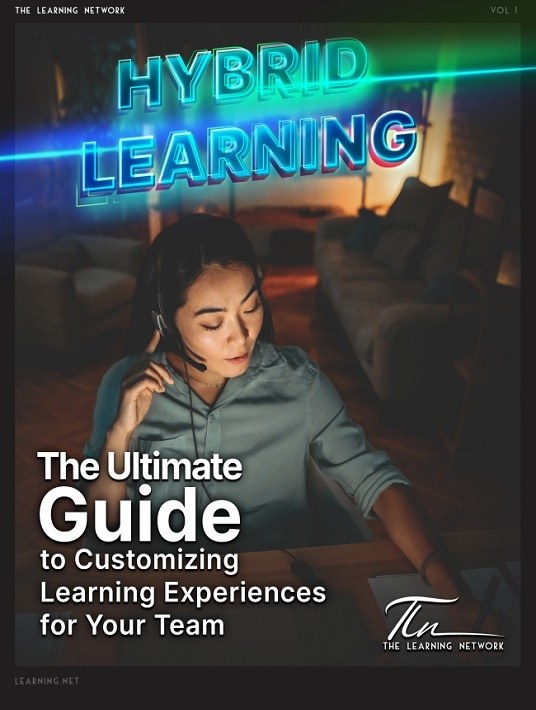Tailoring Your Hybrid Learning Approach To Achieve Maximum Results
Yet another value of hybrid learning is that it allows for a flexible approach to the individual learning needs of your participants. It is opening options into how they want to consume information, thereby improving the overall learning and business outcomes. In our eBook, we discuss the learner implications or limitations. Here we will expand on this in more detail.

Know Your Learner Demographics
Not only should your hybrid program consider your learners’ preferences, but it should also consider their demographics. This can help determine the best voice, style, and design your program should include. Here are 5 questions you need to answer:
- Is there a trend in your company demographics? (Male vs. female, working generation, ethnicity, and culture?)
- What technology will best suit your audience’s learning preferences?
- What voice and style will best suit your learners?
- What is your learner’s work environment? Is it conducive to the training you are proposing?
- Does your learning program give them the information when and how they need it?
Structure Your Program To Work For All Learners
How can you make sure to account for as many learners as possible with your hybrid program? These tips can help guide you as you go along:
- Start with the end in mind: Knowing which outcomes you want to achieve is key to creating a program that succeeds.
- Decide what you will measure: Make sure your specific learning objectives are concise and not open-ended. (e.g., “Learn skills to assemble products with a 0.01% defect rate.”)
- Tap into SME knowledge: To create an effective course, you need to find and rely on those with the subject matter expertise (knowledge) you are trying to share.
- Use a course design document: Your course should look like your brand—polished and a part of your organization. A course design document can help you stay organized and create additional training materials.
- Tell learners how the training benefits them: Knowing the “what’s in it for me” aspect of any learning effort will make it more impactful.
- Divide the course into digestible chunks: Rather than in-person training that takes all day (or multiple days), try using videos, materials, and eLearning courses that can be completed over weeks and months.
- Include experiential learning and custom content: Ensure your course includes scenarios, simulations, and storytelling wherever possible, and instead of relying on clipart, stock photos, or other visuals, try and create your own branded content. This will make your message and theme more impactful.
Creating A Successful Hybrid Learning Approach: Choose Methods And Mediums To Meet Your Goals And Reduce Costs
As we’ve indicated, there are several reasons why companies are embracing eLearning. It’s a cost-effective, time-effective, sustainable, and scalable solution for providing a consistent training experience. Plus, it’s often more effective and engaging than classroom programming! To be clear, providing information to the workforce where and when they need it has an enormous benefit to learning. Equally compelling are the cost savings.
For example, one analysis determined that companies with 1,000 employees or more typically spent over $2,000 a year (per employee) for live training. Conversely, firms that designed and developed eLearning solutions to deliver the same information reduced that cost to under $35 per employee. Make no mistake: hybrid training approaches result in qualitative and quantitative value to the individual learner and the organization.
Conclusion
Download the eBook Hybrid Learning: The Ultimate Guide To Customizing Learning Experiences For Your Team by The Learning Network to discover how you can launch personalized programs for your remote workforce and overcome the limitations of hybrid learning. You can also join the webinar to explore a roadmap for customizing learning experiences with a leading industry expert.









